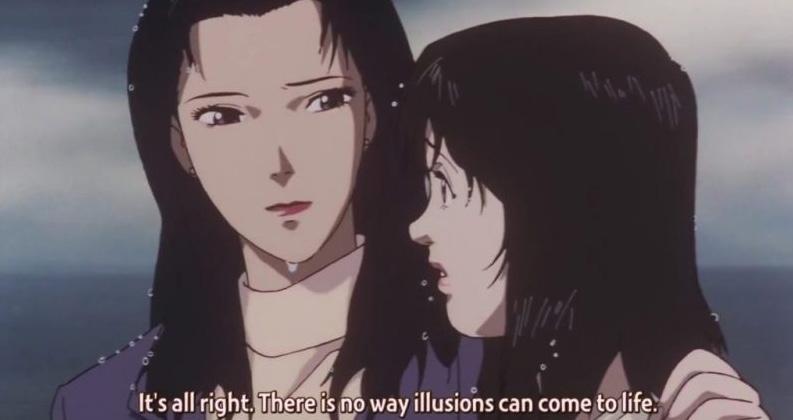
3 minute read
THE STORY WITHIN A STORY: PERFECT BLUE
NICHOLAS WONOSAPUTRA - Writer, 1st Year, Molecular and Cell Biology
"Perfect Blue is my favorite psychological horror film. If you like Serial Experiments Lain and the Monogatari series for their mind-bending cinematography, you’ll love this."
Originally published on Oct. 31, 2019
Spoilers for the plot of Perfect Blue
As I was writing my article for Bloom Into You, I spent a lot of time thinking about the in-universe play in that series, and how it purposefully parallels one of the main characters’ internal struggles. While that series uses its story within the story to clarify its main thesis, Satoshi Kon’s Perfect Blue uses the inuniverse crime drama, Double Bind, as a way to intentionally reflect the confused, seemingly delusionary, state of mind of the film’s protagonist, Mima. This is achieved through the film’s narrative structure, as it progressively shifts from the realm of reality to a world of never-ending red herrings.

The first act of Perfect Blue sets up a rather simple mystery: someone is clearly stalking Mima, and is threatening the lives of all those around her, all because she left her idol group “CHAM!” to start her career as an actress. The film provides various close-up shots of a certain security guard that is obviously obsessed with Mima, and he seems to be the one running the stalker website, “Mima’s Room,” as the “real Mima.” This idyllic persona then starts to haunt Mima as a hallucinatory manifestation of her regrets and desires. Despite the hallucinations and escalating violence around Mima, the film’s sense of reality is relatively intact, and it is still easy to follow what is actually happening in the real world.
However, the film takes a turn towards uncertainty when Mima voluntarily chooses to take a leading role as a rape victim in Double Bind… and thus enacts a rape scene for the show. Just like the character she plays in the crime drama, Mima is traumatized by the shooting of the scene, and Mima’s mental instability spikes. She starts to see her ghostly alter ego more and more vividly, and the scenes of Double Bind start to bleed seamlessly into Mima’s life. One especially memorable scene is when a woman seems to be consulting Mima on her hallucinations as they stand on a concrete platform at a harbor, a thin layer of rainwater covering the top of the concrete like a mirror. Putting her arm around Mima, she says, ”There’s no way illusions can come to life.” However, a shot-reverse-shot cut is made immediately following this line, and shows the security guard, Mima’s supposed stalker, standing amongst a crowd of onlookers. It is only when Mima lets out an off-script gasp is it made clear that she’s actually on the set of Double Bind.

The lines between Double Bind and Perfect Blue only continue to blur, as the two stories begin to seemingly intersect, especially when the audience is treated to a scene depicting Mima violently murdering a shady photographer she worked with earlier in the film. I’m going to avoid spoiling the ending so you can go check it out yourself, but even without going into specifics, you can bet that the confusion between reality and fiction reaches a boiling point at the film’s climax, effectively conveying the film’s broader exploration of the clash between the dehumanizing and false nature of the persona versus the real person that is supposed to be behind it.




